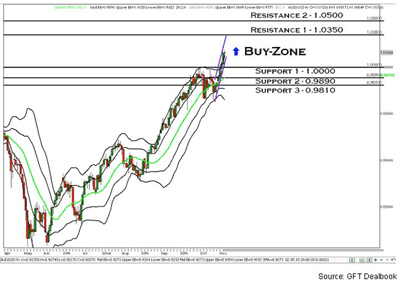For the past few months, the US dollar was sold aggressively in anticipation of further action by the Federal Reserve. As the US recovery lost momentum, investors believed that the central bank would load up their ammunition and take another shot at stimulating the economy.
This was exactly what they did last Wednesday, expanding their asset purchase program by another $600 billion. Now that this has become old news and the market has sold the rumor, is it time to buy the news?
Reactions of Other Currencies
Since the Fed announcement, the dollar extended its losses against most major currencies. The euro, for example, rose to a nine-month high, while the Australian dollar hit a record high. However, the gains were limited. One currency pair that everyone had been watching—US dollar/Japanese yen—barely budged, which is a sign that forex traders may have grown tired of selling dollars.
Economic Improvement
Although the Federal Reserve has been consistently bearish on the US economy, incoming economic data including Friday’s non-farm payrolls suggests that the central bank could be overly pessimistic. Manufacturing and service sector activity also showed signs of improvement, while construction spending rebounded.
If the recent improvements in economic data continue, investors will start to wonder whether the emergency stimulus will need to be curtailed. Of course, it is premature to seriously consider this with the Fed having only increased stimulus on Wednesday, but it is certainly something to keep in mind as we judge the impact of incoming economic data on the Fed’s future monetary policy actions. One month does not make a trend, and the Fed will need to see a few more months of sizable job growth before paring back quantitative easing, but the strong labor market report should go a long way in boosting sentiment.
Strong Growth
All signs point to a stronger recovery in the fourth quarter that will be supported by faster growth in the US and China. The Federal Reserve’s plans to buy an additional $600 billion in Treasuries will also promote a faster recovery with results that should be felt as early as this quarter.
The dollar will carve out a true bottom if the Fed starts to feel more confident about the economy. In the meantime, the lack of significant US economic data this week suggests that investors could continue to digest the non-farm payrolls report with consolidation and profit taking being the dominant theme.
The Chart: AUD/USD
A market-moving release this week could be the Australian employment report. With the Australian dollar trading above parity with the US dollar, a new record high in the currency would hinge upon the strength of the labor market.
As a result, AUD/USD is the currency pair to watch this week. Rising for the seventh consecutive day, AUD/USD remains within a strong uptrend. Since the beginning of June, the pair has been in numerous bullish channels, the most recent being since the end of October.
The nearest level of support is the psychologically significant parity level (1.000), which coincides with the upper one-standard-deviation Bollinger band. If the pair falls below 1.000, the 20-day simple moving average of 0.989 should serve as further support. The closest level of resistance is the top of the channel at 1.035. If this level is crossed, the pair should face further resistance at the psychologically important 1.050 level.
By Kathy Lien of KathyLien.com





















